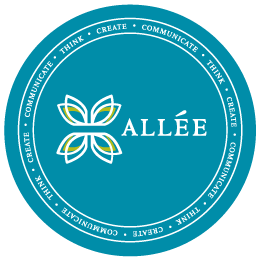As a follow-up to my webinar, “How to Use Content Calendars to Win the Content Game,” I’m sharing my tips and tricks for creating content calendar templates and processes that work to streamline content creation.
Consistency is a struggle for many organizations with limited resources for content creation, specifically on digital channels. By using content calendars to plan social media, email marketing, podcasts, video and blog content on a monthly basis, you have a regular ‘spot’ to store your ideas, plan ahead and schedule content when your schedule gets hectic.
Below is an overview of my process for how to use content calendars on a monthly basis and some additional tools I recommend.
Use one sheets to organize content ideas each month
I create a simple one sheet for each month of the year (think Google Doc, Word, etc.). This is my brain dump of key holidays or observances that month, any speaking engagements, events or company promotions, blog post go-live dates, campaign dates or additional ideas from the team. It’s an easy document that you can add to throughout the year once you have content/ideas/dates/links that you think would work well during a particular month.
When it’s time to start plugging content in and creating content in calendar form, pop open that one sheet and voila! You have a great starter list of ideas that you can populate into the calendar.
Set up content calendars for all channels
An editorial calendar that shows all communication channels, themes per month/quarter and cadence of posting is helpful; it’s a visualization that showcases all your touchpoints. In addition, you need to get to the nitty gritty details of what you’re posting on each of those channels. Set up a content calendar for your blog, for your email marketing campaigns and for your social media channels to plan, visualize and track content on each channel. You can do the same for podcasts, video channels, etc.
Sample blog content calendar

For instance, when brainstorming content for your blog, set up your calendar so that key milestones and information are readily available. Plan ahead for the following:
- Post date or go-live date
- Working post title
- SEO title/slug
- Synopsis of what you want to write about
- Content category this post falls into (there can be more than one)
- Keywords to keep in mind as you’re writing
- Meta description for when the post goes live
- Image (with attribution) that will be used
- Draft due date
- Status to track progress of the post (i.e. draft rounds, revisions, SME interviews, etc.)
I have a handful of more visual examples and set-ups in our Content Calendar Templates free download. This will help with additional calendar layouts for social media channels and email marketing.
Establish a process for how these calendars will ‘talk’ to one another. If you’re using a large-scale editorial calendar, for example, link out to the specific channel calendars that coincide with what you’ve planned for the year.
Source lists and references will help spur ideas
Where do you go to get ideas for your content? How do you track what your competition is doing? Do you have a process for keeping track of key partners, accounts, sponsors, etc. that you should engage with online?
A source list will help.
Your source list can be divided into key groups such as:
- General information and education
- Competitors
- Partners
- Memberships or professional development groups
- Sponsors
- Current customers/clients
- Potential customers/clients
- Influencers
Within those categories, take time and gather info about those key individuals or organizations. The point is to establish an easy, go-to list with links that you can reference, tag or mention as you’re developing content. I put mine into columns across a spreadsheet and include:
- Source name
- Website URL
- Twitter handle
- Facebook page
- LinkedIn page
- Instagram handle
- Video handle/pages
- Notes or other pertinent info and links
I like to keep my source list as a part of my content calendar; it sits as the first tab of my workbook so that I can reference it as I’m creating content in real time.
Get an assist from third-party tools
Third-party content calendar planning and scheduling tools can also help ease the load. So can your metrics software and design tools. Here is my short list of go-to tools I use when developing content:
- Asana
- SproutSocial
- Google Analytics
- Facebook Business Manager / Business Suite
- Stock photo sites (123RF, Pexels, Pixabay, etc.)
- Adobe Creative Suite (alternatively, Canva)
- Emojipedia (easy way to copy/paste emojis into your content if pre-scheduling)
Process is key when we’re creating content for multiple channels. It’s a lot to keep track of and in order to be consistent, we need calendars and structure. However, always keep in mind that digital content, especially, is always changing. Be careful not to ‘set it and forget it’. In other words, while it’s good to plan ahead and even schedule when we can, ensure you have someone monitoring the conversations online and adhering to audience sentiment.
Create content that keeps keywords in mind but that truly speaks to your audience’s pain points. Their needs come first in your content creation process.





